What You Should Know About Your Car’s Filters with FRAM | #102
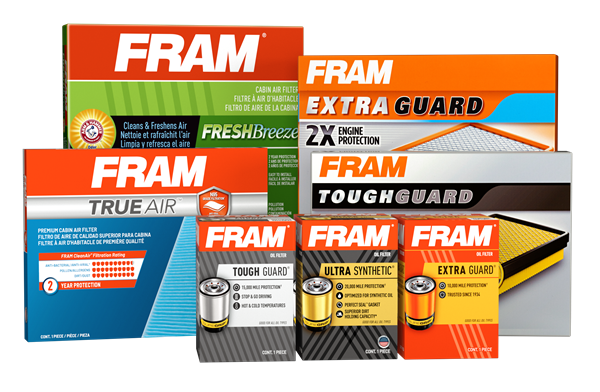
Last Updated on August 12, 2021 by Tim Harman
How much do you know about your car’s filters? I’ve got a filter expert, Nathan Mades from FRAM on the show this week to give you the proper know-how! There’s oil, air, fuel, and cabin air filters along with a few others you don’t normally think about. What does each do and what are the differences in quality?
We specifically mentioned a recently released cabin air filter from FRAM called TrueAir. It features an N95-grade filter material!
Nathan wrapped up the show with a bonus segment about his DIY journey and philosophy.
**Special thanks to FRAM for sponsoring this episode!**
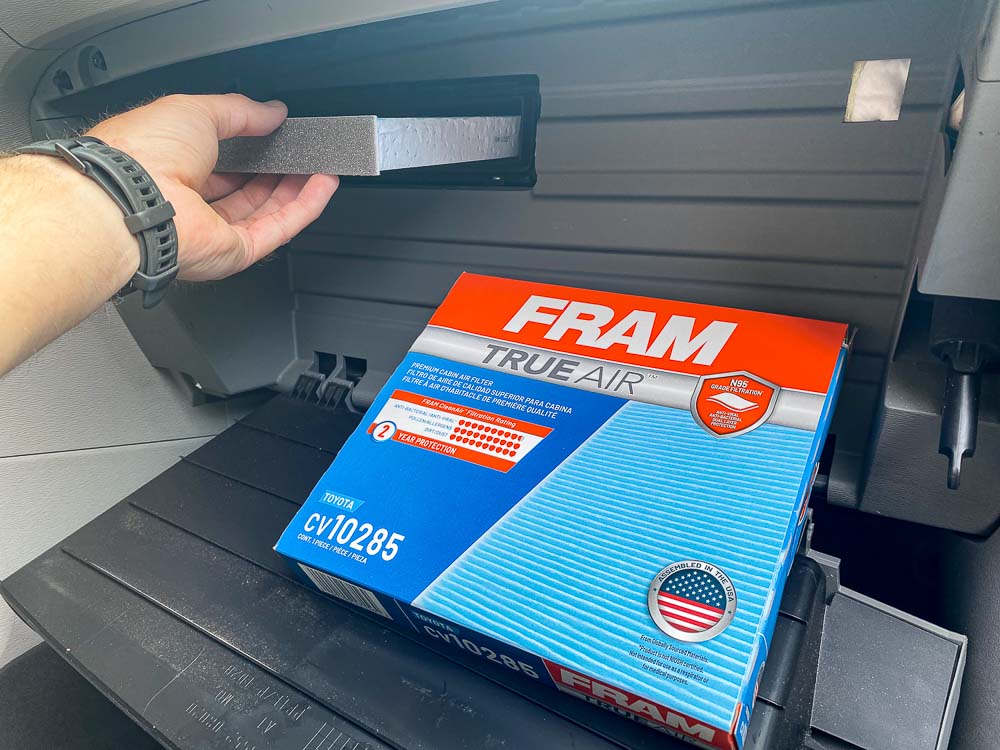
Check out FRAM’s new N-95 grade cabin air filter! I just installed one in our 2012 Toyota Sienna. Love it!
FULL SHOW TRANSCRIPT
Transcribed by Otter.ai (referral link – I love using Otter.ai!) and then edited some. There may be mistakes. 🙂
Tim Harman 0:00
Welcome to the You can, man.™ podcast episode 102. I’m your host, Tim, and on today’s show, What You Should Know About Your Car’s Filters.
Hey guys, welcome back to the You can, man.™ podcast where we believe what one man can do you can do as well, but you got to have help from your friends and the proper know how. On this week’s show, I hope to give you guys some proper know how on your car’s filters, and even some filters that you kind of forget about. You know, we’ve got oil filters, air filters, even cabin air filters, fuel filters, but have you ever wondered what goes into making making these and the differences in the quality? Does it really matter what kind of filter you buy? You know, and what what separates one from the other one? I’ve got a special guest on the show today. Nathan from FRAM, Nathan Say hello.
Nathan Mades with FRAM 1:01
Hello, Tim. It’s pleasure to join you on your show.
Tim Harman 1:04
Yeah, thanks for being here. And Nathan is a Senior Project Manager with FRAM and I do want to say that this is a sponsored show by FRAM. So the frame folks reached out to the You can, man.™ podcast and said, Hey, we’d like to do a podcast to help promote some of our products. And I enthusiastically said, Yes, and here’s why. Because I’ve been using FRAM products for years, and I love their products. And so I would never promote something that I don’t personally use or really like. And so it was such an easy thing to say to the FRAM folks – Yes, absolutely. I literally just put FRAM oil filter in my 2012 Toyota Sienna. So anyways, it’s such an easy decision for me. But I just want to let you guys know on the front end that this is a sponsored episode. But this is something I would do anyways, even if they hadn’t reached out talking about car filters. And so it was a perfect match. Because we talked about changing, you know, your oil yourself on your car all the time. Know that, you know, Josh and Dave guys that were recording with me, we’d go back and forth about whether or not that’s worth doing. And I was always a big proponent. No, you have to do it yourself. And I have all these reasons behind that. But anyways, yeah, I love having Nathan on the show today. And we’re gonna get all in to filters on your car, and including then in N95, cabin air filter. So you guys have heard that term thrown around so much during all of the crazy Rona times that we’ve had the in 95 filters. Well, how about putting one of those things in your car? And Fram has you covered with that? And then we are going to have a bonus segment this week. So Nathan, and we talked previously so Nathan knows this that I always ask my guests, where are you on the DIY scale? Well, Nathan is going to cover that for us and answer that for us. So he’s not he’s not getting out of that question. He’s gonna answer that for us in our bonus segment. And we’re gonna talk about kind of his DIY journey, his personal journey and kind of the motivation behind why he does what he does. So Alright, so Nathan, let’s, let’s get right into it. I’ve got some kind of some questions to help guide us along. So I wanted to take some time first off to talk about FRAM as a company because they’ve been around since 1934. Very long history. So talk to us about you know, the history of FRAM a little bit and how they’ve been established as an industry leader
Nathan Mades with FRAM 3:47
Well, FRAM is Trusted since 1934. And our main facility is located in Greenville, Ohio. We have other manufacturing facilities based in the US through our parent company called First Brands Group. They’re located in Illinois and Michigan where we manufacture additional oil, cabin, air, engine air, and fuel filters.
Tim Harman 4:09
Okay. Yeah, I when I think of FRAM I mean that’s our Sorry, I should say when I think of oil filters I legit do go to FRAM I mean, I feel like they they are the number one filter brand out there like it’s their their name has been around for decades. I’ve probably been using FRAM since the very first time I changed oil. So listeners I know you know you’ve seen it when you’re changing filters in your car FRAM is there. It doesn’t matter what store you’re going to FRAM products are there. And to me, just high quality stuff. I don’t have to worry about FRAM messing up on me. Every time I’ve used FRAM stuff, it’s been great. And so I’m really interested to hear what Nate has to say about all of their different filters. So you know, we’ve got we’ve got the basics, right? We’ve got oil filters of course. We’ve the air filters, like the engine air filters. We’ve got fuel filters. So let’s talk through the different filter types that we have now. And including, I want to touch on too the differences in oil filter types now that we have, we’ve got like the cartridge style that’s kind of been around for a few years, but it’s relatively like a newer filter. So I want to want to talk through talk to you that as well.
Nathan Mades with FRAM 5:30
Sure. I can help with each of those questions. The fuel and engine air filters are similar, and that they protect the engine from contaminants entering the system. Oil filters are the sibling to the engine air filter, and it works to take out contaminants that get past the engine air filter, or those that are created in the lubrication process. Most of us DIY-ers are used to the iconic spin on filter, (Yes.) but some of us are starting to see a different type of filter our newer vehicles called the cartridge. The cartridge styles been introduced on some global platforms where Europe has worked to improve recyclability. And this filter is placed into a permanent housing, it’s attached to the engine, and works in the same way as the can of the spin on filter. Instead of replacing the can every time you’ll only replace the internal components. And I found this pretty interesting. So for the history buffs, listening here, FRAM was started with the invention of the replaceable cartridge. The spin on filter actually wasn’t introduced until FRAM developed it in the 50s.
Tim Harman 6:37
Oh, okay. So that’s interesting. So what we think of as the traditional oil filter wasn’t really traditional. That was like a new invention brought on by FRAM.
Nathan Mades with FRAM 6:47
Right. And, and so from its inception, FRAM has been innovating ways to make the work easier, including things like adding Sure Grip texture to the can.
Tim Harman 6:56
Yes, yes, I was gonna ask you about that too, because that is one thing that when I think of FRAM oil filters specifically, that differentiates you guys from others is that grip that you put on a lot of the filters. Of course, that’s only on the spin on style. It’s not on like the canister ones, obviously. But that’s an interesting, I did not know that. So I guess originally they had the cartridge style that would go in some sort of housing, but then FRAM designed the the spin on style, so Okay, well, that’s interesting. I literally had not, I didn’t know that yet. So the firt the first car that I’ve ever owned, that has the cartridge styles are 2012 Toyota Sienna, yes, I got a minivan now guys. I love the thing. I love driving that thing. I had to look up YouTube videos, how to change this cartridge style, because I had just never, I had never done it. I had never looked into so like, you know, you gotta you got to drain the oil out of the…well, you don’t have to. But you’ll get oil all over yourself. But you got to drain the oil out of the canister first before you unscrew the housing. So that was like one big thing. But yeah, it’s way less waste too is another big thing to this cartridge styles because the spin on ones that that’s gonna be creating a lot of waste. It’s like a one time use thing. And then you know, you’re just throwing out away. So you talked about some European car manufacturers have they been using it for a lot longer than the American car manufacturers?
Nathan Mades with FRAM 8:28
I think it’s just been introduced on on these global platforms and the OEMs have been working to reduce the throwaway content and increase that recyclability content. It’s been an initiative that has been going on for quite some time now.
Tim Harman 8:43
Okay. So let’s let’s talk about some of those more, I don’t know, obscure filters on the car. So, you know, we’ve kind of covered some of the basics there. And I do want to get to cabin air filters. But you know, things like the PCV valve, I always I always think like Wait, is there a valve on the on the end of that when I say PCV and it is. So, positive crankcase ventilation. But let’s talk about some of those filters that we just don’t think about very often. And I guess that PCV would be one of those.
Nathan Mades with FRAM 9:18
PCV is actually a pretty easy filter to change yourself. Unlike some others transmission, hydraulic, power steering, or coolant or breather filters…anywhere there’s a fluid or air moving through the vehicle there can be a filter. Generally these are replaced infrequently or only as a repair.
Tim Harman 9:38
Right. You had mentioned a coolant filter. I don’t…maybe cars I’ve had have this. I don’t remember seeing a coolant filter. Maybe my Toyota Sienna does. Is that a fancy thing? Because I don’t remember seeing that.
Nathan Mades with FRAM 9:57
It’s not as common, and you’ll you’ll see this more common on heavy duty equipment.
Tim Harman 10:01
Okay, okay, that makes more sense. And even like the hydraulic stuff, I guess, FRAM makes filters for all that, but that’s gonna be more on like heavy machinery, Maybe?
Nathan Mades with FRAM 10:13
Absolutely, it can be.
Tim Harman 10:14
Okay. Now, of course, you’ve got transmission filters. And that’s something that, gosh, not a lot of DIY-ers tackle. I have before, but I think a lot of people that even just to kind of basic work, don’t think that they can do a transmission filter. And of course, this depends completely on the type of vehicle that you have. But I’ve done it before on my 98 Ford Explorer. (How’d that go for you?) It was not bad, it was not bad at all, I had to, you know, drop the transmission pan, of course. And I ended up replacing the transmission pan the stock one with one that had a drain plug, because the original one didn’t have it. But obviously, when I dropped the pan, I was changing that filter. So and then another one too, that you I think you had mentioned was the power steering filter. And that’s another one that it makes sense, the power steering fluid filter, but I don’t remember ever seeing one of those on a car that I own. Is that more of a technical, like a thing on heavy machinery? Or is that something that we’re seeing on cars?
Nathan Mades with FRAM 11:23
We do see that on cars and trucks. But again, it’s just not something that you replace, as a maintenance item. It’s something that you would replace as a repair or included in the power steering mechanisms.
Tim Harman 11:39
Okay, so that makes sense. So like, if you have some sort of catastrophic failure in your power steering pump, then you might have metal shavings, and who knows what, and then that power steering filter, fluid filter is going to catch that stuff. But you wouldn’t really be replacing that it’s just like a maintenance thing. It’s just if you have a failure with the power steering system, is that what you mean? (Right.) Right. Well, let’s, let’s talk about you know, I, when I go, I go to the parts store, and there is seriously just like a plethora of different filter choices. So what are those things that are differentiating one filter from the next?
Nathan Mades with FRAM 12:22
In filtration, you’re when you’re shopping for a filter, you’re looking for durability, capability and longevity in the products that you buy. Filters are really characterized by their efficiency, which is the size and percent of the contaminant captured, (right) their capacity, the grams of contaminants that that filter will hold, and restriction measured by the pressure drop or the pressure differential.
Tim Harman 12:49
Okay, and that restriction probably comes really into play when we’re talking like something like the the engine air filter, because obviously, you want as much air flowing through that filter as possible. But then you also want to be catching as much junk. So, it’s kind of like a trade off, I guess, or like the better product is going to be something that’s you know, catching a lot of the junk, but also letting that air flow freely,
Nathan Mades with FRAM 13:17
Right. So it is a balance during development of a filter. When one of these characteristics, efficiency, capacity or restriction are improved, the others might be reduced. And the filter media can be made of cellulose or glass, synthetics or even a blend, and blends and synthetics are more recent additions to filter media, and can really provide a superior filtration. There’s other critical components that contribute to a longer life of a filter. The sealing gasket and the anti drainback valve in the oil filter need to be made of specific durable material so they can last longer. Once you’ve developed the media that has a high efficiency to improve both the capacity and the restriction it takes a more expensive media and that’s why we’re part of the reason you see different prices for different filters on the shelf.
Tim Harman 14:17
Right and FRAM has you know, they’ve got multiple different grades. So like I’m looking at it, I feel like I normally gravitate towards the Tough Guard, which I don’t think is like the bottom one. It’s kind of like a couple up. But so what you’re saying is it just basically all has to do with the type of media that is being used to capture contaminants. Yes?
Nathan Mades with FRAM 14:41
Yeah. On the oil side, you have Extra Guard, Tough Guard, like you said, and Ultra Synthetic. That’s kind of the good, better and best. There are examples of the tiered performers in the frame offering. With every step up the components are improved to provide superior protection and extend the maintenance schedule. So the media are all rated at 20 microns. Do you know what a micron is?
Tim Harman 15:07
I do not. Especially when it comes to something like this. I mean, I would think it’s like something like, you know, parts per million or something like that, I don’t know.
Nathan Mades with FRAM 15:17
So I’m micron is the measurement unit used to identify the size of contaminants in the filtration industry. To give you an example of how small this is 20 microns is about 65 times shorter than the length of the grain of sand.
Tim Harman 15:35
Okay, that’s small.
Nathan Mades with FRAM 15:36
Or imagine splitting a sheet of notebook paper into five different layers, each layer would be about 20 microns thick.
Tim Harman 15:44
Okay. Okay. So each of the filters like regardless of what you’re getting, you know, the different grade grades of frame offers, that they’re all going to be filtering at least 20. micro… sorry, what did you say?
Nathan Mades with FRAM 16:01
Uh huh, at 20 microns thick. And so when you’re shopping for a filter, you’re going to want to look for a smaller micron size, but also at a high percentage of efficiency.
Tim Harman 16:13
Okay,
Nathan Mades with FRAM 16:13
Some filters out there advertise a higher efficiency, but at a larger particle size. You can get both plus a longer filter life with higher grades of filters.
Tim Harman 16:25
Okay, is that something like? Are they gonna post? Is that like something in your tech sheets? or something? Or is that? Is that going to be something I’m going to be able to see on the box? Like, if I’m at the store, can I pick up that box and see these micron levels?
Nathan Mades with FRAM 16:40
Right, you will. The Extra Guard filter is 95% efficient at that 20 micron size, and that lasts up to 10,000 miles. The Tough Guard filter that you use is 99% efficient. So 99% of particles at 20 microns or larger are being captured and that one last up to 15,000 miles. And Ultra Synthetic is somewhere above that 99% and last up to 20,000 miles.
Tim Harman 17:10
Okay, so that transitions my next question I had. So we’re all familiar with the changing oil every 3,000 miles that was for probably decades, like the standard, okay, yeah. Three are always like three months or 3,000 miles. Now with the introduction of synthetics and engines are getting way better. Oil quality, everything that’s all been kind of done away with, and I think it’s been done away with for like, I feel like maybe at least like 10 years, or plus, I don’t know, I’m trying to remember like when the last time was I saw some sort of ad or something that said every 3,000 miles. But you know, you’ve got all these new new cars coming out. And they will literally say, you know, in the owner’s manual, you don’t have to do that. It’s gonna be like every like, like 7,000 miles, and then everybody’s got an opinion on how often you should be changing it. And I know, you know, FRAM probably doesn’t have like an official stance on that, because it’s probably going to have to do with the individual car is is that the case? Or no?
Nathan Mades with FRAM 18:18
We do recommend referring to the owner’s manual for the oil filter change interval, (okay) but these engines, these newer engines are built with tighter tolerances, for example, turbos, and run at hotter temperatures, sometimes using synthetic oil to achieve the performance and those longer change intervals. And with these tighter tolerances, equipping your engine with synthetic filters, such as a FRAM Ultra Synthetic, you can take advantage of the longer life of the synthetic oil and get a change life up to 20,000 miles.
Tim Harman 18:56
Okay, now that’s crazy. 20,000 miles. So you’re saying if I’m going to probably spend the money…so okay, let’s take my situation, for example. So I always change my own oil. I take advantage of buying the nicer oil, so I get like the full synthetic oil because I guess in my head, I’m thinking, Well, I’m not paying the exorbitant amount of money to take it somewhere. So I can afford to put the nicer oil in my cars, so I always do that. So I probably should be pairing that with a higher grade filter and then maybe even leaving that in longer in between oil changes because what you’re saying it sounds like you know if I bought this the better FRAM filter like the top FRAM filter, I could probably go through multiple oil changes at least two maybe I’m trying to think about what intervals I’m changing at now. I think I’m I think I met like about like 5,500 miles every 5,500 miles. And I know it could probably go longer, but I’m just like, because our minivans kind of getting up there in miles and so probably arbitrary, but that’s what I’ve been doing. But so you’re saying so like, if I, if I’ve changed in every 5,500 miles or so, if I had that higher grade FRAM oil filter this full synthetic version of that, could I go through multiple oil changes with th`at? At my 5,000 interval?
Nathan Mades with FRAM 20:32
You would never reuse an oil filter during oil change. When you change your oil or change your filter, you should change both at the same time.
Tim Harman 20:41
Okay. Okay, so that’s good to know then.
Nathan Mades with FRAM 20:43
But you know, the standard oil and a standard oil filter, working in tandem got you that 3,000 mile change interval, but by improving the materials in the filter, and then combining it with the improved performance and life of a synthetic oil is how you achieve the longer change.
Tim Harman 21:09
So bottom line, if you’re going through the trouble and the expense of using that higher grade full synthetic oil, you should probably be pairing it with the higher grade oil filter to kind of take advantage of that longer mileage (Absolutely.) that you’re getting in between the filter changes. Yeah, so probably what I should do is just extend should probably upgrade to the better filter, and then extend those time periods in between when I’m changing oil. I could probably do that on my Toyota but my old 1998 Ford Explorer, burns oil, so like I literally can’t go that far in between because I gotta just it Yeah, it’s it’s not good to do that. I got changed that more frequently. But okay, well, that’s good to know, probably, you guys listening that still change your oil. I know we’re a dying breed. But that needs to change. If you’re using synthetic oil, you probably should just go ahead and bump up to the nicer oil filter to pair it with. So that’s okay. So that’s good to know. Let’s talk about the cabin air filters. I wanted to hit on this because I feel like that’s one of those things that people don’t even realize they have in their car. And I was trying to think about I think the first car that I owned that had one was we had a 2006 Honda Accord. That’s what it was. And it had one I was a very first time I had a car with one and then you had to like it like pop off like the cowl cover. To access this one. It was really weird because now I’m thinking like most of all the cars that I know of, you access it through like the glovebox door, so like my Toyota Sienna. That’s how you access it to the glovebox door, but talk about cabin air filters, you know, why should we care? And why should we care about cabin air filters?
Nathan Mades with FRAM 23:00
Right. Yeah, the first cabin air filter in its basic form was invented in the 50s by a manufacturer of a needle nonwoven fabric. (Okay) And he noticed that his clothes would get dirty from the vent air when riding in the car. So he took some of its fabric and put it over the air intake vents. And that reduce the amount of debris that was coming into the car. Sometime after that Mercedes decided to add this to their vehicles as a feature. (Of course it was Mercedes) And the first time was in 1989. And then Ford tried it in the mid 90s on the Contour. (Really?) It didn’t catch on really widely until recently.
Tim Harman 23:48
Yeah, that’s interesting that you say that Ford did on the Contour because yeah, totally owned a 97 Contour, I had no clue that I had a cabin air filter.
Nathan Mades with FRAM 23:57
And now most vehicles after 2005 come equipped with a cabin air filter. And with good reason. The importance of a cabin air filter is that it removes the dirt and contaminants from the air that you breathe inside of the vehicle. So this is different than the engine filter which filters the air your engine breathes, right. And the idea behind this filter is similar to the filter in your HVAC system in the house, your furnace, just like your house changing this filter will keep the air you breathe cleaner. And if you notice the AC or the heat not blowing as great as it used to, for example, or the air from the vents smells musty. Probably a good sign to check the cabin air filter for replacement.
Tim Harman 24:42
Yeah, cuz the first time I had changed that filter, the thing was nasty. And like I just I didn’t even realize it, you know? And then you think back of well I like I think about my 98 Explorer. Well, it doesn’t even have one and so the vents You know, it’s that old. So who knows what in the world is in all the vents, you know. Especially when you’re thinking through like, the AC and the humidity, especially in the south, and then that condensation that can build up and then you got mildew issues. Well, when the air is circulating if you’ve got a cabin air filter, which chances are most of you guys listening, your car probably has one, you know, it’s gonna be filtering out some of that stuff for you. And then, you know, another big thing I was thinking through is pollen. A lot of our listeners are in the metro Atlanta area, or at least the southeast, we get crazy pollen every spring this year, this past year wasn’t wasn’t actually that bad. I don’t know if it was like the rain schedule of like, when how much rain we got and stuff like that. But you know, if you don’t have that cabin air filter, or if you’re if you do have a cabin air filter, and it’s horrible, and it’s not filtering out what it should, you’re going to be getting pollen and stuff all up in your vents. And so that was one thing my brain went to you because I’ll even have on my Explorer…I’ll have, I’ll notice around springtime, like some pollen, just kind of just inside the vents. So you can kind of just see like a light little dusting of yellow. And I’m assuming if I had a cabin air filter, I wouldn’t be wouldn’t be seeing that.
Nathan Mades with FRAM 26:18
Right? Yeah, changing the filter season I can really help especially if you’re suffering from allergies. Typically I’ll change the filter once a year, but I might check it out every spring and fall just for inspection.
Tim Harman 26:33
Right. And, maybe it’s just my car – are most of the locations going to be accessible from the from the glove box?
Nathan Mades with FRAM 26:43
Most vehicles I’ve looked at have their filter located near the glove box might be behind the glove box, you open it up and open a door or under the glove box towards the center of the vehicle, both of which are really simple to get to. And like you said earlier others are in this great spot under the hood near the windshield when you call it a cowl,
Tim Harman 27:07
I don’t know if that’s the right word or not. But
Nathan Mades with FRAM 27:09
That’s exactly right. And just like on your home’s furnace, you remove that cover, remove the old filter, clean out any debris that you find, pop in the new filter and close it back up.
Tim Harman 27:20
Yeah. You know, you guys have got a fairly new filter, the TrueAir filter, I think is what you’re calling it. And it has graded at the N95 level.
Nathan Mades with FRAM 27:34
Yeah, before this past year, not many of us thought so critically about the air we breathe, we started wearing these N95 masks and thought what if we use this grade of filter media for the cabin, and it could really help a lot of people. So we developed this remarkable filter called the FRAM TrueAir. And it protects against harmful contaminants as small as point three microns at a 95% efficiency. And it’s a really quick and easy DIY project. You can reference the owner’s manual to find where the cabin filter is located on your vehicle. In a few minutes, you should be able to replace it.
Tim Harman 28:12
Yeah, totally not hard. And then you know if you’ve got if you want to just do a quick YouTube search with your car, make and model, you’ll be able to figure it out like in no time. Totally a DIY job, for sure. So check out that TrueAir N95 filters that FRAM has got going on now. Well, Nathan, I really appreciate your time going through talking about all the differences and filters. I definitely learned some things. But listeners stick around, we’re gonna have a bonus segment and Nate’s gonna talk kind of more about his own personal DIY journey and philosophy. I think he may ask me some questions too. I don’t know. But we’ll be back after the break. Stick around.
Guys, welcome back. We’re going to be talking to Nathan about his own DIY journey, you know, his philosophy behind doing what he does. So you know, he’s a product manager with FRAM, but also does a lot of stuff himself, and what a great company to work for, FRAM, and you’re into the DIY culture. And so FRAM is huge into that, you know, people change in their own oil and that sort of thing. And so I think it’s great that Nathan is into that himself. So Nathan, what would you say is, you know, what got you started doing things yourself? Was that something you grew up doing? Or when did when did that start?
Nathan Mades with FRAM 30:37
Well, mygrandpa was the ultimate DIY-er, in our family. He seemed to be able to build just about anything. A house, a garage, a shop, and he built restored vintage cars. And they’re really beautiful, and one of them, he pulled out of a lake in Missouri. And yeah, he had to make the tools to make tools needed to create body panels and other parts. And it’s such a great memory, sitting with him, and working on his cars, when I got a chance, or using the sandblaster, or just really getting the hang out with him. And when I got my first car, I was poor. It has had some problems. And if I wanted to drive it, I had to learn how to fix it.
Tim Harman 31:33
Right. So it was out of necessity.
Nathan Mades with FRAM 31:35
Right. It was. When I was looking at how to get something fixed, I would look at both how much it would cost for me to do it plus buy the tools, or how much it would cost for me to pay somebody to do it. And sometimes I could buy the tools and learn how to do it. And I just had to do that sometimes in order to make it work.
Tim Harman 31:56
Yep, totally. Because a lot and we’ve talked about this too, on the podcast before that. A lot of times what starts your Do It Yourself journey is literally out of necessity, or just you’re poor. And you have to do this, like, you know, you’re your college student, and your cars, your car breaks down, and you don’t have the money to pay somebody else to do it. But you could buy the tools and do it yourself and save a lot of money. So it sounds like that was kind of the the way that you really got and started doing things yourself. So what like what do you feel like is one of those, you know, bigger jobs that you’ve done on your car?
Nathan Mades with FRAM 32:36
Right off straightaway, I had to replace the fuel tank and soon after that I had a leak and had to replace the head gasket. So, I had to pull apart a lot of the top of the engine. And so it really got me into understanding how the engine works, how to maintain it, and how to work in a clean environment when opening that sensitive part of the vehicle.
Tim Harman 33:04
Oh, for sure. So talk to me about that fuel tank that you had to drop. What kind of car was that in?
Nathan Mades with FRAM 33:09
Well, it was in the middle of winter, of course.
Tim Harman 33:13
And you’re in what Michigan? Yes?
Nathan Mades with FRAM 33:15
Michigan. So I got whatever little heat I could in the garage, got the car off the ground and and dropped it down. You know, my fingers were just numb, but I was able to do it and succeed and get a new new fuel tank popped in all in the same day. So I felt really successful with that.
Tim Harman 33:36
And sorry, you may have said it, but what car was that in?
Nathan Mades with FRAM 33:39
That was a 1996 Oldsmobile Cutlass Sierra.
Tim Harman 33:44
Oh, nice. Nice. So was it a was it like a rust issue? Because I know y’all deal with a lot of that.
Nathan Mades with FRAM 33:51
It was a rust issue. It had perforations at the bottom of the tank.
Tim Harman 33:53
Yeah, it’s so foreign to us. You know, in the Atlanta area, having thinking through rust issues. I know that’s like a big thing where you are. I don’t think I’ve ever had to really deal with that. I mean, I’ve got an old Bronco, a 75 Ford Bronco, and I had to deal with rust on that but (it’s a great truck). Yeah, it’s just because it was you know from 1975 but you guys you know you could have a car that’s a few years old and if you’re not good about washing all that salt mess off of there on your undercarriage you could start having rust problems you know, within a couple years I would assume of getting a new car. Gosh, and then the head gasket…I’m trying to remember I don’t think I’ve done a head gasket. I think I’ve helped a friend do it. But I don’t think I’ve had to do that on mine. But what you said about you know, keeping everything that neat and clean. That’s so important. You know when you’re doing doing a head gasket, especially like cleaning you know, cleaning that surface before you put everything back together.
Nathan Mades with FRAM 35:02
Right. Yeah, anytime you open something with a seal or gasket, you got to completely clean that off and replace the seal, or gasket.
Tim Harman 35:11
Yeah. So let’s wrap up. I know it was a we had a phone call earlier this week to just kind of go over the show notes and that sort of thing about what we’d be talking about. And I remember you saying that you all at FRAM, I kind of noticed a resurgence, if you will, of a lot of your customers doing things themselves over this whole COVID year that we’ve had is that, that the case like you, you’re seeing more people get into that?
Nathan Mades with FRAM 35:43
There was a bit of a shift. And I think we’re discovering the pride that we can gain from developing our skills, and displaying the results of our efforts. For me, and for many others, just learning how to do something takes time and effort. With all the spare time that many of us acquired over the last year, it’s allowed us to start getting into more of these DIY projects.
Tim Harman 36:05
Totally. Yeah, we’ve seen that we’ve seen that a ton on our Facebook group, just all these people tackling these big projects. And so that makes total sense. Like, I would assume that a lot more people have been changing their own oil, because well, I don’t have that two hour commute now. So I’ve got that much more of my life back, you know, working from home. So it makes total sense to do that. So I would encourage our listeners, you know, you’re thinking through, you got extra time now if you’ve if you’ve now switched to working from home, I don’t know, you know, how many folks are going to be going back to the office or not? Did you have to go back to the office? Nathan?
Nathan Mades with FRAM 36:48
We are not yet, but we do go back to the office and meet in groups and teams, just to get some face to face time and work on some projects where we need that extra together and face to face.
Tim Harman 37:01
Right. What was your commute like before? Like, how much time have you got back from your life?
Nathan Mades with FRAM 37:07
I’ve got an hour back in my life. (Okay!) Half hour there, half hour back every day. And while it’s it’s nice not driving and the commute, I still like to go out and drive and just cruise around.
Tim Harman 37:19
Right, right. Yeah, I mean, you think about that, just the sheer amount of time that people are getting back. And so yeah, just listeners, I want to encourage you think through, like literally add up those hours. think through how many hours you used to be spending commuting. And hopefully, you know you’re working for a company that is allowing you to work from home and that sort of thing. And man, take some time to take up that next, you know, do it yourself project. And don’t waste the time that you’ve now gotten back. Kind of the…don’t waste the time that COVID had stolen from you. But now you know you’ve got back now having to go into the office. I think that’s gonna do it for this week’s show. Nathan, thank you so much for coming on the show and schooling us about all the various filters that FRAM makes. And just really appreciate your frame sponsoring the You can, man.™ podcast. It says a lot about FRAM as a company to reach out to You can, man.™ We’re still kind of like one of the little guys but we’re out there trying to, you know, promote everybody doing it yourself, doing things yourself and a big part of that is working on your car yourself. And FRAM has allowed us to do that and with their awesome products. And so I really, really appreciate FRAM reaching out to me and doing this sponsored episode. So Nathan, thank you so much for being on the show with us today.
Nathan Mades with FRAM 38:47
Absolutely. Tim, it was a pleasure to join you.
Tim Harman 38:50
Alright guys, check out the Facebook group page if you haven’t done so already. I’ll be posting some stuff FRAM related, of course, on the Facebook group page. And if you have any questions, specific questions about you know, any kind of filters that we talked about on the show today, maybe just use the Facebook group as an outlet to do that and then I’ll kind of forward those questions on to Nathan and we’ll get a get an answer back for you. But thanks so much for joining us once again. And we will catch you guys next time.
Transcribed by Otter.ai (referral link – I love using Otter.ai!) and then edited some. There may be mistakes. 🙂


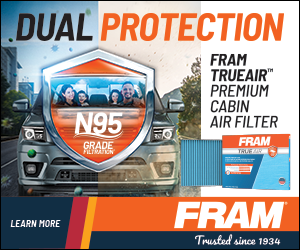
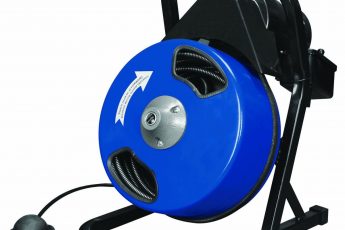
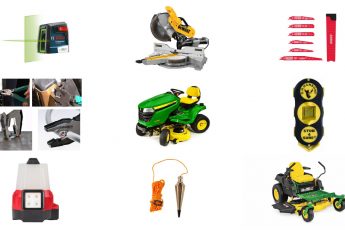


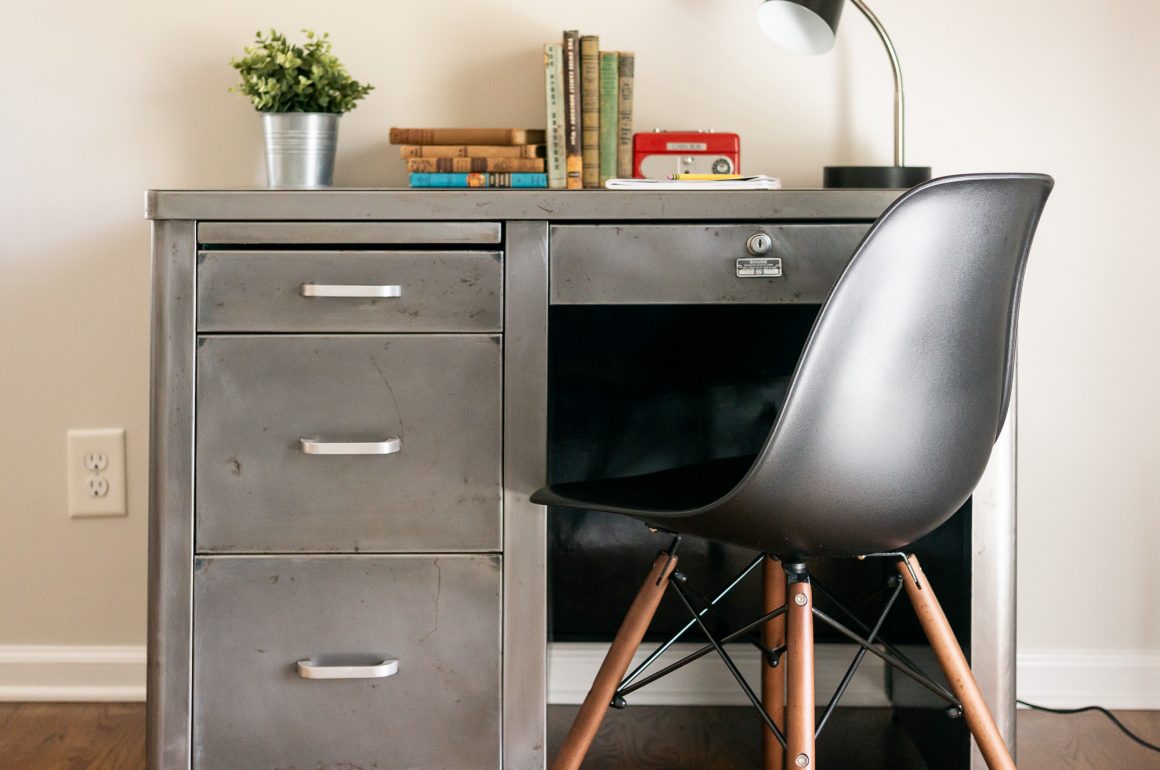
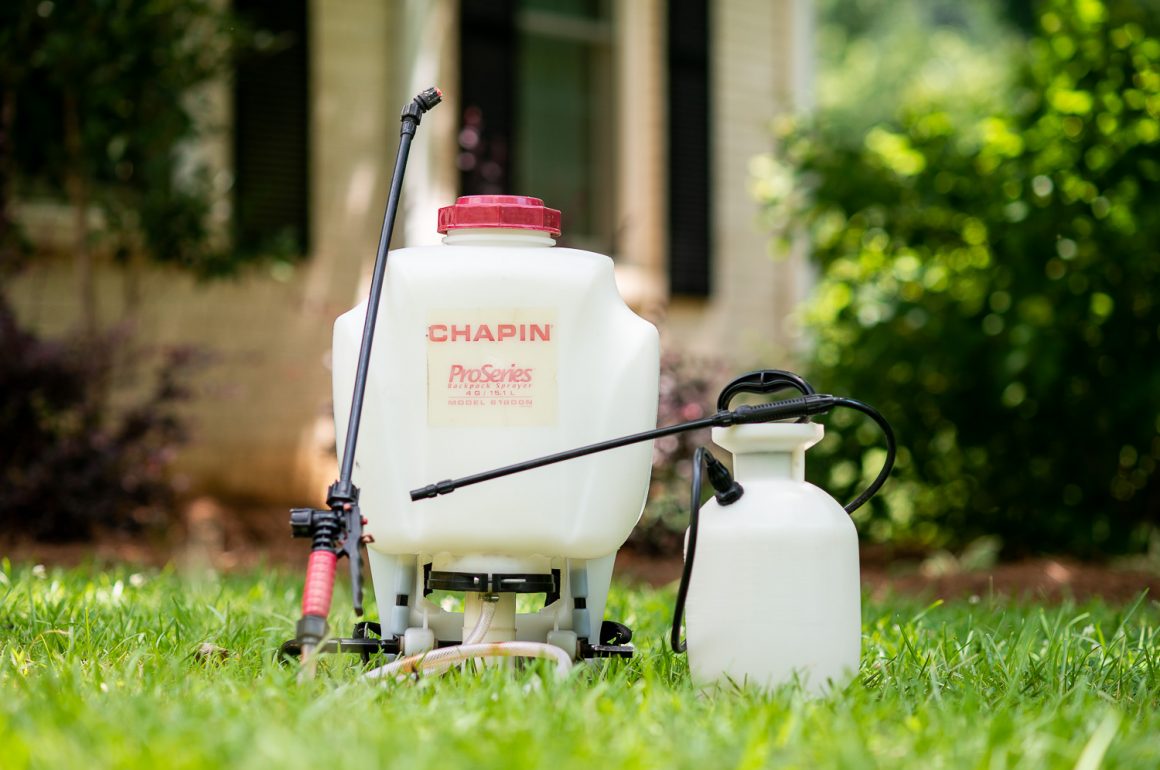

Leave a Comment